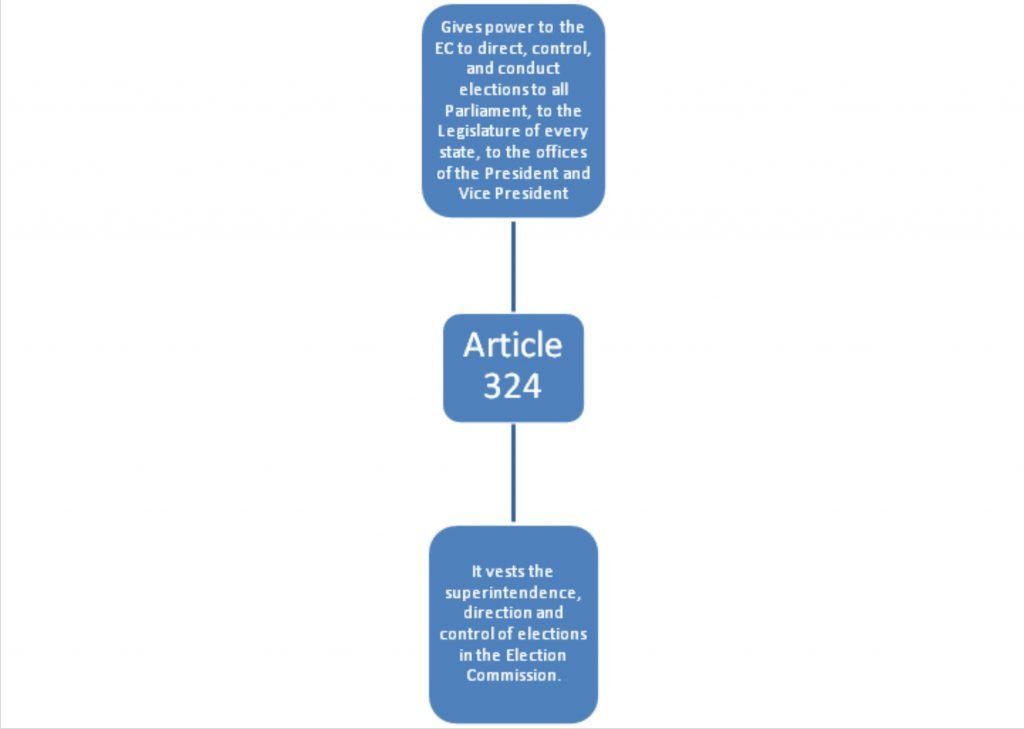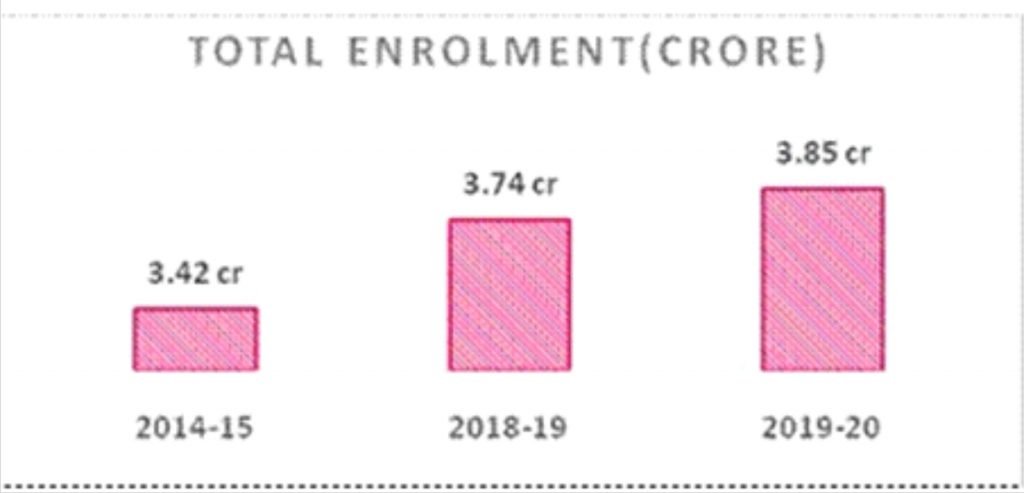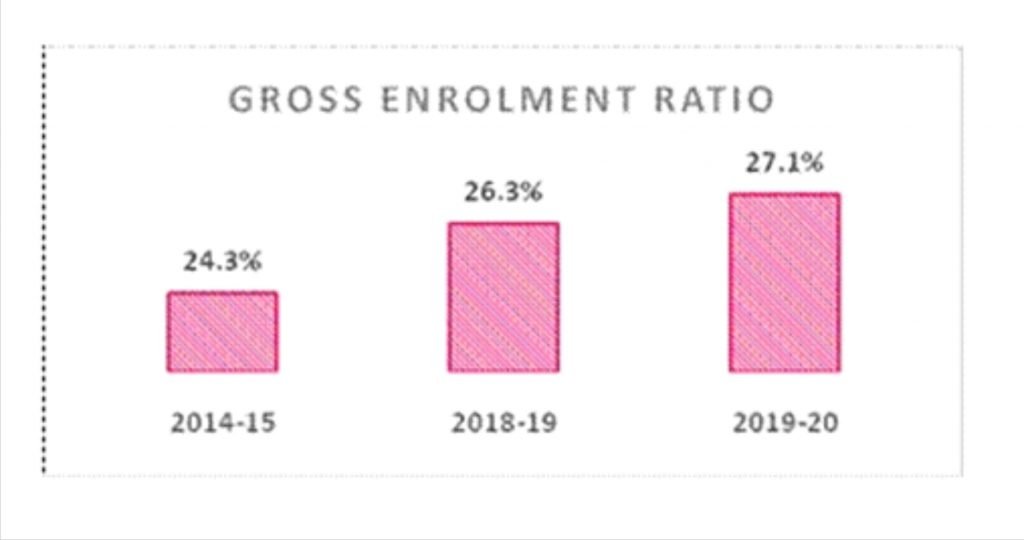Current Affairs (12th June 2021)
Criminalisation of politics
Context:
- Legal and political experts opine that the Election Commission could do more to stop the criminalisation of politics.
About:
- A discussion was held on the implementation of the Supreme Court’s February 2020 directions to political parties on publishing criminal antecedents of candidates.
- It was suggested that with the assumption that political parties would not cooperate, the ECI and the judiciary would have to play their parts.
- It was highlighted that ECI has vast powers including under Article 324 of the Constitution.
- Judiciary also has an important role to play in the criminalisation of politics as cases remain pending for years.
- Investigation and trial of cases should be expedited and there should be an effort to disseminate information to voters.

Criminalisation of Politics:
- It means the participation of criminals in politics which includes that criminals can contest in the elections and get elected as members of the Parliament and the State Legislatures.
- It takes place primarily due to the nexus between politicians and criminals.
Issue:
- There has been a rise in the trend of people with not so clean backgrounds contesting for elections.
- The judgment Rambabu Singh Thakur versus Sunil Arora and Ors held that if a political party fails to comply with the order’s directions, it would be seen as being in contempt.
- Immediately after this, Bihar elections (2020) were held with no decrease in the number of such candidates.
New Atlantic Charter
Context:
- US President Joe Biden and British Prime Minister Boris Johnson met for the first time to highlight their nations’ famed special relationship.
Charter:
- They inspected the documents related to the Atlantic Charter.
- Atlantic Charter is a declaration signed by British Prime Minister Winston Churchill and U.S. President Franklin D. Roosevelt in August 1941, setting out common goals for the world after Second World War.
- Those goals included freer trade, disarmament, and the right to self-determination of all people.
- It is often cited as a cornerstone of the trans-Atlantic “special relationship.”
- The charter laid the foundation for the United Nations and NATO.
About meeting:
- The meeting took place on the eve of the G7 Leaders’ Summit.
- The two leaders plan to sign a new Atlantic Charter.
- It would be in a pledge to “defend the principles, values, and institutions of democracy and open societies.”
- The new Charter outlines modern-day threats including illicit finance, violent conflict & extremism, climate change, and global health crises like the Covid-19 pandemic.
- It looks to defend enduring values and is aimed at the challenge posed by countries like China and Russia with its promises to promote free trade, human rights, and a rules-based international order, and to counter those who seek to undermine the alliances and institutions.
All India Survey on Higher Education (AISHE) 2019-20
Context:
- Recently, the Union Education Minister has released the report of All India Survey on Higher Education (AISHE) 2019-20.
About AISHE:
- The report provides key performance indicators on the status of higher education in the country.
- The report is the 10th in the series of All India Survey on Higher Education (AISHE) annually released by the Department of Higher Education.
- The Ministry of Education has been conducting an annual web based AISHE since 2010-11 in which it provides key performance indicators on the current status of higher education.
- Data is collected on several parameters such as teachers, student enrolment, programmes, examination results, education finance and infrastructure.
- Indicators of educational development such as Institution Density, Gross Enrolment Ratio (GER), Pupil-Teacher ratio (PTR), Gender Parity Index (GPI) and Per Student Expenditure (PSE) will also be calculated from the data collected through AISHE.
Highlights:
- In the last five years from 2015-16 to 2019-20, there has been a growth of 11.4 per cent in the student enrolment.
- The rise in female enrolment in higher education during the period is 18.2 per cent.
- Total Enrolment in Higher Education: It stands at 3.85 crore in 2019-20 as compared to 3.74 crore in 2018-19, registering a growth of 11.36 lakh (3.04 per cent). Total enrollment was 3.42 crore in 2014-15.
- A total of 3.38 crore students enrolled in programmes at undergraduate and postgraduate level. Of these, nearly 85 per cent of the students (2.85 crore) were enrolled in the six major disciplines such as Humanities, Science, Commerce, Engineering & Technology, Medical Science, and IT & Computer.

- Gross Enrolment Ratio (GER): It increased by a minuscule 0.8 per cent in 2019-20. It is the percentage of students belonging to the eligible age group enrolled in higher education and is calculated for 18-23 years of age group.
- It was 27.1 per cent in 2019-20 against 26.3 per cent in 2018-19 and 24.3 per cent in 2014-2015.
- The GER for male population is 26.9 and for females, it is 27.3. For Scheduled Castes, it is 23.4 and for Scheduled Tribes, it is 18.0 as compared to the national GER of 27.1.

- Gender Parity Index (GPI): GPI in higher education in 2019-20 is 1.01 against 1.00 in 2018-19. It indicates an improvement in the relative access to higher education for females of the eligible age group compared to males.
- Pupil Teacher Ratio (PTR): PTR in higher education in 2019-20 is 26. The total number of teachers stands at 15,03,156 comprising 57.5 percent male and 42.5 percent female.
- PTR is the number of students who attend a school or university divided by the number of teachers in the institution.
- Data on PhD Students: The number of students pursuing PhD in 2019-20 is 2.03 lakh against 1.17 lakh in 2014-15. However, of the 1043 universities, 42343 colleges and 11779 standalone institutions listed on the AISHE portal, only 2.7 per cent offer PhD programmes and 35.04 per cent of colleges run postgraduate (PG) level programmes
- Other Data for 2019-20
- The number of total universities is 1,043, (2 percent higher).
- The total number of colleges is 42,343 (77 percent higher).
- Total number of stand-alone institutions is 11,779, (21 percent higher).
- The number of Institutes of National Importance (INIs) have increased 80 per cent (from 75 in 2015 to 135 in 2020).
- The proportion of female students is lowest in INIs followed by Deemed University-Government, State Private University.
Delhi’s Master Plan 2041
Context:
- The Delhi Development Authority gave its preliminary approval to the draft Master Plan for Delhi (MPD) 2041. The current Master Plan for Delhi 2021 expires this year.
About:
- A city’s master plan is a vision document by the planners and the land-owning agency of the city that gives direction to the future development.
- It includes analysis, recommendations, and proposals keeping in mind the population, economy, housing, transportation, and land use.
- The draft MPD 2041 seeks to foster a sustainable, liveable and vibrant Delhi by 2041. It presents a plan for the city for the next 20 years.
Housing Sector –
- The plan aims to incentivise rented accommodation by inviting private players and government agencies to invest more.
- It addresses parking problems and suggests a ‘user pays’ principle, which means users of all personal motor vehicles, except for non-motorised ones, have to pay for authorised parking facilities, spaces and streets.
- It aims to minimise vehicular pollution through key strategies, like a switch to greener fuels for public transport and adoption of mixed-use of transit-oriented development (TOD).
Water –
- It aims improving the quality of water, which is taken from the Yamuna River as well as various lakes, natural drains and baolis.
- It lays a clear boundary of the buffer zone near the Yamuna River and explores how to develop it.
- As per the plan, a green buffer of 300-metre width shall be maintained wherever feasible along the entire edge of the river.
Health –
- MPD 2041 plans to reduce vulnerability to airborne epidemics through decentralised workspaces, creation of open areas, etc.,
- It aims to better habitat design and green-rated developments to reduce dependence on mechanical ventilation systems.
- It aims to develop common community spaces to provide refuge spots, common kitchens and quarantine space in an emergency.
- It plans to improve the night-time economy by focusing on cultural festivals, bus, metro, sports facilities, and retail stores included in Delhi Development Authority’s (DDA) Night Life Circuit plan.
Delta Variant
Context:
- The data from clinical trials and post-vaccination study on vaccines shows that the Dominant delta variant of Covid-19 can’t be easily controlled by a single dose of vaccine. The countries must administer two doses of vaccine and should reduce the time gap between them.
About the Delta Variant:
- It was first identified in Maharashtra and is believed to be responsible for the severe second wave in India.
- It has now spread to most parts of India and also been identified in many other countries.
- The rapid expansion has induced the WHO to graduate it from a “variant of interest” (VOI) to a “variant of concern” (VOC) category.
Scientists have undertaken various studies to address 3 major questions surrounding the delta VOC –
- Is it more infectious than the prevalent virus?
- Is it more lethal than the previous virus?
- Does the delta variant is more resistant to the effect of vaccines?

